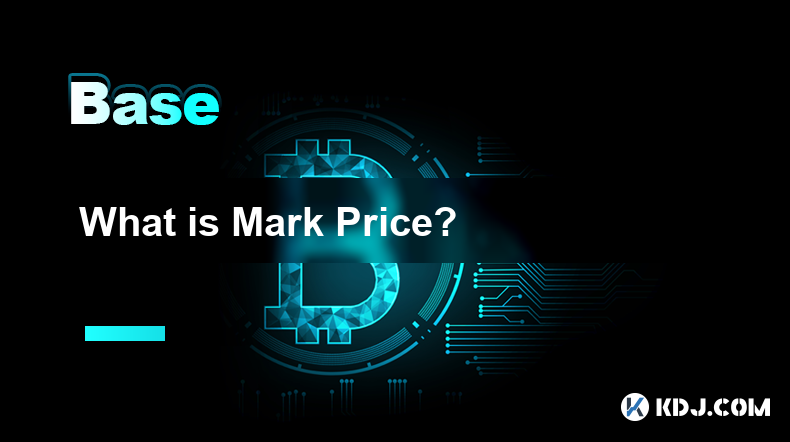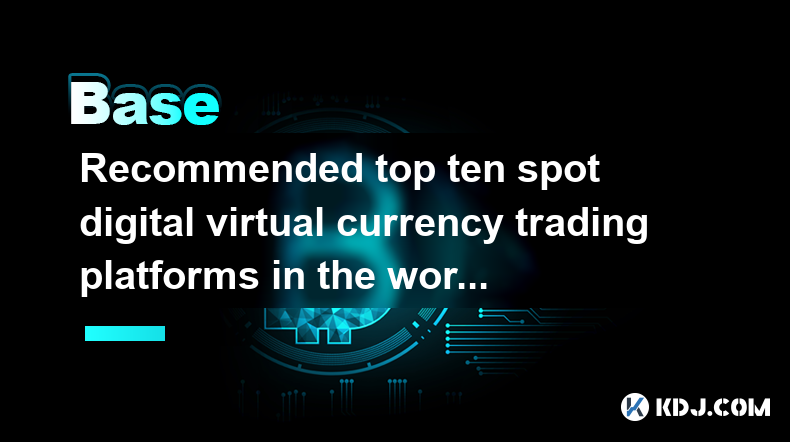-
 Bitcoin
Bitcoin $87,066.3384
2.57% -
 Ethereum
Ethereum $1,575.4052
-0.49% -
 Tether USDt
Tether USDt $1.0000
0.00% -
 XRP
XRP $2.0743
-0.02% -
 BNB
BNB $595.7825
0.83% -
 Solana
Solana $136.4079
-0.38% -
 USDC
USDC $0.9999
-0.01% -
 Dogecoin
Dogecoin $0.1581
2.00% -
 TRON
TRON $0.2461
0.07% -
 Cardano
Cardano $0.6196
0.16% -
 Chainlink
Chainlink $13.0591
-2.01% -
 UNUS SED LEO
UNUS SED LEO $9.1392
-2.02% -
 Avalanche
Avalanche $19.8657
2.37% -
 Stellar
Stellar $0.2514
3.00% -
 Toncoin
Toncoin $2.8936
-3.40% -
 Shiba Inu
Shiba Inu $0.0...01231
-0.36% -
 Sui
Sui $2.1999
4.48% -
 Hedera
Hedera $0.1692
2.08% -
 Bitcoin Cash
Bitcoin Cash $343.9033
2.31% -
 Hyperliquid
Hyperliquid $18.0140
3.65% -
 Polkadot
Polkadot $3.7968
-2.33% -
 Litecoin
Litecoin $77.6904
0.03% -
 Dai
Dai $0.9999
0.00% -
 Bitget Token
Bitget Token $4.4339
0.86% -
 Ethena USDe
Ethena USDe $0.9993
-0.01% -
 Pi
Pi $0.6352
-0.68% -
 Monero
Monero $215.3155
0.42% -
 Uniswap
Uniswap $5.2608
0.42% -
 Pepe
Pepe $0.0...07751
3.06% -
 Aptos
Aptos $4.9488
-1.93%
What is Mark Price?
Mark Price, a dynamic cryptocurrency market price, fluctuates constantly due to supply and demand. Derived from various exchanges, its accuracy depends on data sources and is influenced by trading volume, news, regulations, and market sentiment. Understanding Mark Price is crucial for informed trading and investment decisions.
Mar 24, 2025 at 08:14 pm

Key Points:
- Mark Price refers to the current market price of a cryptocurrency at any given time. It's a dynamic figure, constantly fluctuating based on supply and demand.
- Understanding Mark Price is crucial for traders, investors, and anyone involved in the cryptocurrency market. It informs trading decisions, valuation, and risk assessment.
- Mark Price is derived from various sources, including centralized and decentralized exchanges, and its accuracy can vary depending on the source and market conditions.
- Factors influencing Mark Price include trading volume, news events, regulatory changes, technological advancements, and overall market sentiment.
- Obtaining accurate Mark Price data requires utilizing reliable and reputable sources, and understanding the potential for manipulation or inaccuracies.
What is Mark Price?
The term "Mark Price" in the cryptocurrency context refers to the current market price of a specific cryptocurrency at a particular moment. Unlike a fixed price, the Mark Price is constantly changing, reflecting the dynamic interplay of supply and demand within the cryptocurrency market. This price is crucial for various activities within the crypto ecosystem, from simple trading decisions to complex algorithmic trading strategies. Understanding how Mark Price is determined and the factors influencing it is paramount for anyone navigating the cryptocurrency world.
How is Mark Price Determined?
Mark Price isn't determined by a single entity. Instead, it's a consensus-based price derived from multiple sources. These sources typically include data from various cryptocurrency exchanges. Centralized exchanges (CEXs) like Coinbase, Binance, and Kraken all contribute to the overall picture. However, decentralized exchanges (DEXs) also play a role, offering a more distributed and arguably more transparent price discovery mechanism. The specific methodology for aggregating these prices varies depending on the platform or service providing the Mark Price information. Some use weighted averages, considering the trading volume on each exchange, while others may use a simple average or median.
Factors Influencing Mark Price
Several factors influence the Mark Price of a cryptocurrency. Firstly, trading volume significantly impacts price. High trading volume generally suggests stronger market interest and can lead to price volatility. Secondly, news events, both positive and negative, can drastically affect a cryptocurrency's Mark Price. Positive news, such as a major partnership announcement, can drive prices up, while negative news, such as a security breach, can cause a sharp decline. Regulatory changes also play a substantial role, as governments' stances on cryptocurrencies can influence investor confidence and, consequently, Mark Price. Technological advancements within a cryptocurrency's ecosystem, like upgrades or new features, can also affect its price. Finally, overall market sentiment – the general feeling of optimism or pessimism among investors – is a powerful force shaping Mark Price.
Sources of Mark Price Data
Obtaining accurate and reliable Mark Price data is critical. Many websites and services provide real-time cryptocurrency pricing information. However, the accuracy and reliability of these sources vary considerably. Reputable sources usually aggregate data from multiple exchanges and employ sophisticated algorithms to minimize errors and manipulation. It's advisable to compare Mark Price data across multiple sources to ensure consistency and identify potential discrepancies. Always be cautious of sources that appear biased or lack transparency in their methodology. Using multiple, well-established sources is a prudent approach.
The Importance of Understanding Mark Price
Understanding Mark Price is fundamental for several reasons. For traders, it's the cornerstone of their decision-making process. They use Mark Price to identify potential buying or selling opportunities, execute trades, and manage risk. For investors, Mark Price helps assess the value of their cryptocurrency holdings and track their portfolio's performance. Developers and projects use Mark Price as a benchmark to measure the success of their cryptocurrency and attract investors. Finally, analysts and researchers use Mark Price data to study market trends, identify patterns, and build predictive models. In essence, Mark Price is the lifeblood of the cryptocurrency market, providing essential information for all participants.
Mark Price and its Relation to other Metrics
Mark Price is often used in conjunction with other metrics to gain a more comprehensive understanding of a cryptocurrency's value and market dynamics. For instance, it's frequently compared to the cryptocurrency's circulating supply to calculate its market capitalization. This provides a broader perspective on the overall value of the cryptocurrency in the market. Furthermore, Mark Price is often analyzed in relation to its historical price data to identify trends and patterns, aiding in predicting future price movements. Considering Mark Price alongside other indicators like trading volume, market dominance, and social media sentiment can provide a more nuanced and informed view of the cryptocurrency's current state and potential future performance.
Common Questions and Answers:
Q: Is Mark Price the same as the average price across all exchanges?
A: Not necessarily. While many Mark Price calculations involve averaging prices from multiple exchanges, the method used can vary. Some prioritize volume-weighted averages, giving more weight to exchanges with higher trading volume. Others may simply average all available prices. Therefore, the Mark Price you see on one platform might differ slightly from another.
Q: Can Mark Price be manipulated?
A: Yes, although sophisticated aggregation methods aim to minimize this risk, the potential for manipulation exists, especially on smaller, less liquid exchanges. Wash trading (creating artificial volume) or coordinated manipulation by large market players could influence the Mark Price reported by certain sources. It's essential to rely on reputable sources that implement robust anti-manipulation measures.
Q: How often is Mark Price updated?
A: Mark Price is typically updated in real-time or near real-time, reflecting the constant changes in the cryptocurrency market. The frequency of updates depends on the data provider, but many offer updates every few seconds or minutes.
Q: What's the difference between Mark Price and Last Traded Price?
A: The last traded price reflects the price of the most recent transaction on a specific exchange. Mark Price, however, is a broader representation of the current market price, typically derived from multiple exchanges to provide a more comprehensive and representative value. The last traded price can be influenced by individual trades and may not reflect the overall market sentiment as accurately as the Mark Price.
Q: Is Mark Price a reliable indicator of a cryptocurrency's intrinsic value?
A: No, Mark Price is primarily a reflection of market sentiment and trading activity. It doesn't necessarily reflect the intrinsic value of a cryptocurrency, which is often debated and difficult to quantify objectively. Factors like technology, adoption rate, and future potential all contribute to intrinsic value, but these are not directly reflected in the Mark Price.
Disclaimer:info@kdj.com
The information provided is not trading advice. kdj.com does not assume any responsibility for any investments made based on the information provided in this article. Cryptocurrencies are highly volatile and it is highly recommended that you invest with caution after thorough research!
If you believe that the content used on this website infringes your copyright, please contact us immediately (info@kdj.com) and we will delete it promptly.
- Lightchain AI: The Future of Cryptocurrency
- 2025-04-22 05:30:13
- Coinbase Expands XRP Futures Contracts Trading
- 2025-04-22 05:30:13
- Difficulty Spike and Hashrate Drop Lengthen Block Times
- 2025-04-22 05:25:13
- Despite the Harshest Profit Squeeze in Half a Decade, Bitcoin Mining on U.S. Soil is Consolidating and Gathering Momentum
- 2025-04-22 05:25:13
- Bitcoin (BTC) markets ticked higher
- 2025-04-22 05:20:13
- Shiba Inu (SHIB) and Lightchain AI (LCAI) Are Rapidly Gaining Ground, Positioning Themselves as Serious Competitors to Dogecoin.
- 2025-04-22 05:20:13
Related knowledge

What are the formal digital currency trading apps? What are the BTC exchange apps?
Apr 22,2025 at 03:28am
Regular BTC trading app 1. Binance Binance is a world-renowned digital currency trading platform, providing powerful APPs and excellent user experience. Its main features include: Rich trading pairs : Binance supports over 500 cryptocurrencies and thousands of trading pairs, and users can easily find the currency they want to trade. High security : Bina...

Recommended top ten spot digital virtual currency trading platforms in the world in 2025
Apr 21,2025 at 05:15pm
Recommended top ten spot digital virtual currency trading platforms in the world in 2025 1. Binance As the world's premier cryptocurrency trading platform, Binance is known for its extensive trading pairs and efficient trading services. Its features include: High Liquidity : Binance has huge trading volumes, ensuring users can trade at the best pric...

Ranking of top ten virtual currency trading apps in the currency circle (the latest authoritative list in 2025)
Apr 21,2025 at 10:28pm
The top ten virtual currency trading apps in the 2025 cryptocurrency circle are listed as follows: 1. Binance Binance is one of the world's leading cryptocurrency trading platforms, known for its efficient trading system and extensive currency support. Binance's user interface is designed with simplicity and is suitable for beginners and profess...

Introduction to the top ten digital currency trading app platforms in 2025
Apr 22,2025 at 03:49am
Introduction to the top ten digital currency trading app platforms in 2025 1. Binance Binance is one of the world's leading digital currency trading platforms, ranking first with its huge trading volume and extensive user base. Binance provides trading pairs of more than 500 cryptocurrencies, supporting a variety of trading methods such as spot trad...

The latest ranking of the top ten digital virtual currency trading platforms in 2025
Apr 22,2025 at 02:14am
The latest ranking of the top ten digital virtual currency trading platforms in 2025 1. Binance As the world's largest cryptocurrency trading platform, Binance has always maintained its leading position. The platform offers trading pairs in over 500 cryptocurrencies and supports multiple languages and payment methods. Its user-friendly interface i...

Which virtual currency app is better? Top ten cryptocurrency app trading platforms
Apr 22,2025 at 02:35am
Top 10 cryptocurrency trading application platforms recommended 1. Binance Binance is one of the world's leading cryptocurrency trading platforms, and is popular for its extensive currency support and efficient trading systems. Binance provides services including spot trading, futures trading, leveraged trading, etc., which meet the needs of differe...

What are the formal digital currency trading apps? What are the BTC exchange apps?
Apr 22,2025 at 03:28am
Regular BTC trading app 1. Binance Binance is a world-renowned digital currency trading platform, providing powerful APPs and excellent user experience. Its main features include: Rich trading pairs : Binance supports over 500 cryptocurrencies and thousands of trading pairs, and users can easily find the currency they want to trade. High security : Bina...

Recommended top ten spot digital virtual currency trading platforms in the world in 2025
Apr 21,2025 at 05:15pm
Recommended top ten spot digital virtual currency trading platforms in the world in 2025 1. Binance As the world's premier cryptocurrency trading platform, Binance is known for its extensive trading pairs and efficient trading services. Its features include: High Liquidity : Binance has huge trading volumes, ensuring users can trade at the best pric...

Ranking of top ten virtual currency trading apps in the currency circle (the latest authoritative list in 2025)
Apr 21,2025 at 10:28pm
The top ten virtual currency trading apps in the 2025 cryptocurrency circle are listed as follows: 1. Binance Binance is one of the world's leading cryptocurrency trading platforms, known for its efficient trading system and extensive currency support. Binance's user interface is designed with simplicity and is suitable for beginners and profess...

Introduction to the top ten digital currency trading app platforms in 2025
Apr 22,2025 at 03:49am
Introduction to the top ten digital currency trading app platforms in 2025 1. Binance Binance is one of the world's leading digital currency trading platforms, ranking first with its huge trading volume and extensive user base. Binance provides trading pairs of more than 500 cryptocurrencies, supporting a variety of trading methods such as spot trad...

The latest ranking of the top ten digital virtual currency trading platforms in 2025
Apr 22,2025 at 02:14am
The latest ranking of the top ten digital virtual currency trading platforms in 2025 1. Binance As the world's largest cryptocurrency trading platform, Binance has always maintained its leading position. The platform offers trading pairs in over 500 cryptocurrencies and supports multiple languages and payment methods. Its user-friendly interface i...

Which virtual currency app is better? Top ten cryptocurrency app trading platforms
Apr 22,2025 at 02:35am
Top 10 cryptocurrency trading application platforms recommended 1. Binance Binance is one of the world's leading cryptocurrency trading platforms, and is popular for its extensive currency support and efficient trading systems. Binance provides services including spot trading, futures trading, leveraged trading, etc., which meet the needs of differe...
See all articles






















































































